Vitamin A
Filters
-
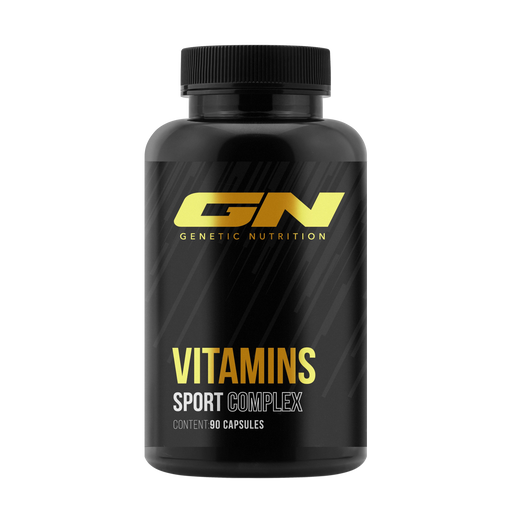 Save 11%
Save %
Original price €34,90Original price €34,90 - Original price €34,90Original price €34,90Current price €31,06€31,06 - €31,06Current price €31,06| /
Save 11%
Save %
Original price €34,90Original price €34,90 - Original price €34,90Original price €34,90Current price €31,06€31,06 - €31,06Current price €31,06| /Vitamins Sport Complex · 90 capsules
GN Laboratories75 reviewsThe "insurance policy" for every athlete and non-athlete, ensuring that no deficiency of any essential vitamin or mineral can affect your maximum p...
View full detailsOriginal price €34,90Original price €34,90 - Original price €34,90Original price €34,90Current price €31,06€31,06 - €31,06Current price €31,06| /Save 11% Save % -
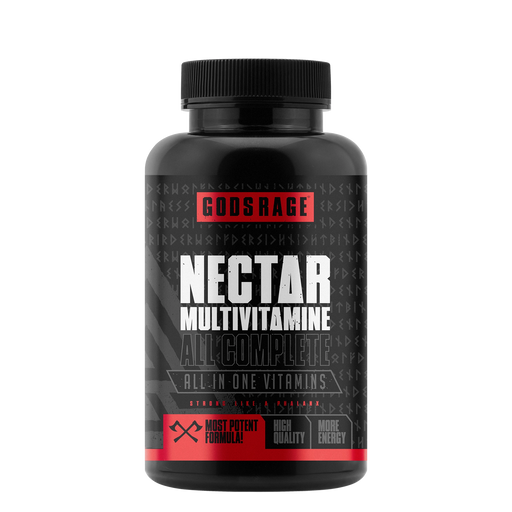 Sold out
Original price €34,90Original price €34,90 - Original price €34,90Original price €34,90Current price €31,06€31,06 - €31,06Current price €31,06| /
Sold out
Original price €34,90Original price €34,90 - Original price €34,90Original price €34,90Current price €31,06€31,06 - €31,06Current price €31,06| /Nectar Multivitamin · 90 capsules
Gods Rage40 reviewsUse the nectar of the Greek gods to become the strongest, most invincible and healthiest warrior you can be High doses of essential vitamins and m...
View full detailsOriginal price €34,90Original price €34,90 - Original price €34,90Original price €34,90Current price €31,06€31,06 - €31,06Current price €31,06| /Sold out -
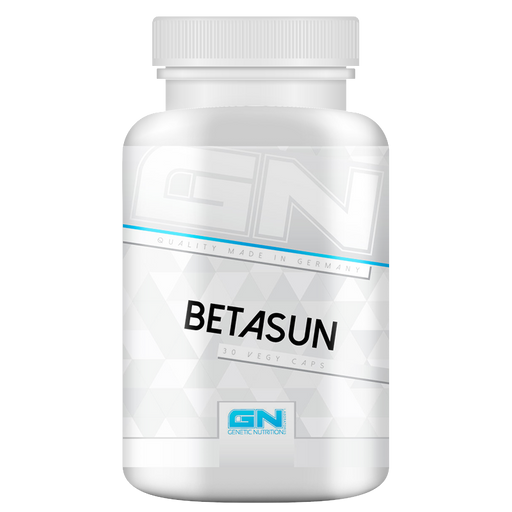 Save 11%
Save %
Original price €14,90Original price €14,90 - Original price €14,90Original price €14,90Current price €13,26€13,26 - €13,26Current price €13,26| /
Save 11%
Save %
Original price €14,90Original price €14,90 - Original price €14,90Original price €14,90Current price €13,26€13,26 - €13,26Current price €13,26| /BetaSUN · 30 capsules
GN Laboratories8 reviewsBetaSUN - GN Laboratories Accelerating the tanning process of the skin! Acceleration of the tanning process of the skin Better maintenance of an e...
View full detailsOriginal price €14,90Original price €14,90 - Original price €14,90Original price €14,90Current price €13,26€13,26 - €13,26Current price €13,26| /Save 11% Save % -
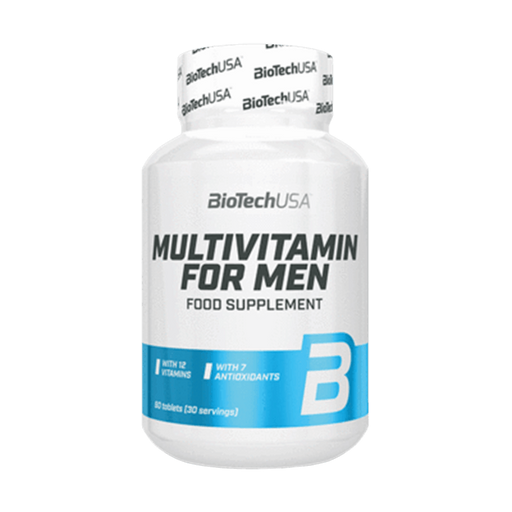 Save 11%
Save %
Original price €15,90Original price €15,90 - Original price €15,90Original price €15,90Current price €14,15€14,15 - €14,15Current price €14,15| /
Save 11%
Save %
Original price €15,90Original price €15,90 - Original price €15,90Original price €15,90Current price €14,15€14,15 - €14,15Current price €14,15| /Multivitamin For Men · 60 tablets
Biotech USA1 reviewMultivitamin preparation specially developed for men Contains a balanced blend of vitamins, minerals and other nutrients Supports muscle building ...
View full detailsOriginal price €15,90Original price €15,90 - Original price €15,90Original price €15,90Current price €14,15€14,15 - €14,15Current price €14,15| /Save 11% Save % -
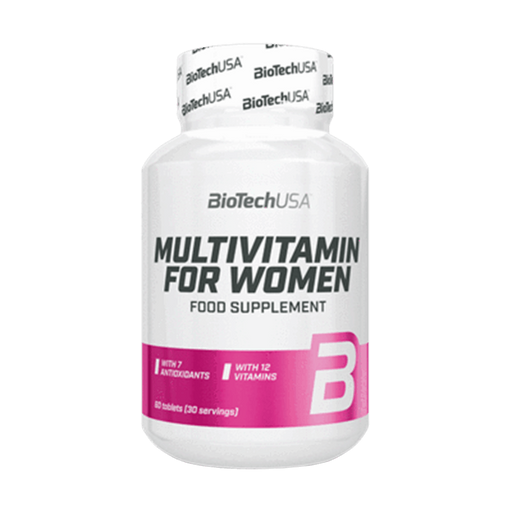 Save 11%
Save %
Original price €15,90Original price €15,90 - Original price €15,90Original price €15,90Current price €14,15€14,15 - €14,15Current price €14,15| /
Save 11%
Save %
Original price €15,90Original price €15,90 - Original price €15,90Original price €15,90Current price €14,15€14,15 - €14,15Current price €14,15| /Multivitamin For Women · 60 tablets
Biotech USANo reviewsMultivitamin For Women from Biotech USA is a dietary supplement for women. Contains a complex blend of vitamins and minerals. High calcium content...
View full detailsOriginal price €15,90Original price €15,90 - Original price €15,90Original price €15,90Current price €14,15€14,15 - €14,15Current price €14,15| /Save 11% Save % -
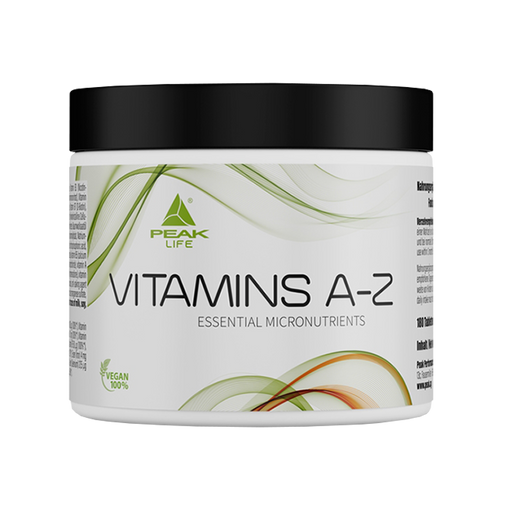 Save 11%
Save %
Original price €9,90Original price €9,90 - Original price €9,90Original price €9,90Current price €8,81€8,81 - €8,81Current price €8,81| /
Save 11%
Save %
Original price €9,90Original price €9,90 - Original price €9,90Original price €9,90Current price €8,81€8,81 - €8,81Current price €8,81| /Vitamins A-Z · 180 tablets
PEAK2 reviewsOptimized formula with 23 vitamins, minerals and trace elements Vitamin complex with 13 vitamins Tablets with depot effect Ideal for basic supply
Original price €9,90Original price €9,90 - Original price €9,90Original price €9,90Current price €8,81€8,81 - €8,81Current price €8,81| /Save 11% Save % -
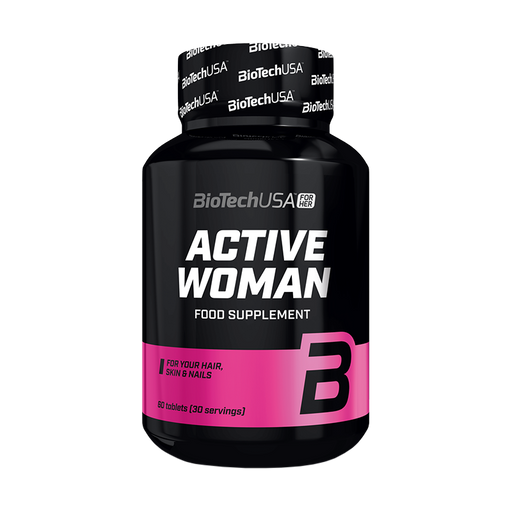 Save 11%
Save %
Original price €14,90Original price €14,90 - Original price €14,90Original price €14,90Current price €13,26€13,26 - €13,26Current price €13,26| /
Save 11%
Save %
Original price €14,90Original price €14,90 - Original price €14,90Original price €14,90Current price €13,26€13,26 - €13,26Current price €13,26| /Active Woman · 60 tablets
Biotech USANo reviewsContains 13 vitamins and 12 minerals Contains 15 antioxidant active ingredients With natural plant extracts Contains vitamin C, Q10, calcium and f...
View full detailsOriginal price €14,90Original price €14,90 - Original price €14,90Original price €14,90Current price €13,26€13,26 - €13,26Current price €13,26| /Save 11% Save %
Vitamin A is a fat-soluble vitamin that plays a vital role in the body. It occurs naturally in food and can also be taken in the form of supplements. Although vitamin A is often thought of as a single nutrient, the name actually refers to a group of fat-soluble compounds including retinol, retinal and retinyl esters. Two forms of vitamin A are found in food. "Finished" vitamin A - retinol and retinyl esters - are found exclusively in animal products such as dairy products, liver and fish, while provitamin A catotenoids are found in plant foods such as fruit, vegetables and oils (1). Only different carotenoids are found in plants. They have a provitamin character and can be partially converted to vitamin A by humans. How well the carotenoids can be converted into vitamin A depends on their structure (composition). Beta-carotene has the most favorable structure. Under certain conditions, it can be converted into two vitamin A molecules.
In order to be able to use these forms of vitamin A, the body must first convert them into retinal and retinoic acid - the active forms of the vitamin. As vitamin A is a fat-soluble vitamin, it can be stored in the body tissue for later use. Most vitamin A is stored in the liver in the form of retinyl esters (2). These esters are broken down into trans-retinol, which binds to the retinol-binding protein (RBP). In this bound form, vitamin A then enters the bloodstream so that the body can use it (3). The structural nature of vitamin A and carotenoids makes these substances very sensitive to light, oxygen and acids. As a result, they lose their biological effectiveness. If food is stored and prepared incorrectly, this can lead to the bioavailability of vitamin A and carotenoids being halved. Long cooking times and uncooled, bright storage should be avoided wherever possible.
The example of carrots shows that the bioavailability of these substances can be improved using simple cooking techniques. In fresh carrot juice, the cell walls of the root (which contain carotene), which are otherwise difficult to digest, are broken down. This leaves the carotenoids "free" and more available to the digestive system. Most of the raw, unbroken cells are excreted again and with them the carotenes and other biological substances of the cell. The same applies to blanching. The cell walls are made easier to digest by the brief application of heat, thus increasing bioavailability. Tip: Fat consumed with food further increases the absorption capacity of carotenoids. This is due to their fat-soluble properties.
Metabolism
Carotenoids and vitamin A are mainly present in the diet in a certain form of fat (esters). This means that their absorption is closely linked to fat metabolism. They are broken down by bile acid and enzymes (esterases). Thus "broken down", they can be absorbed by the epithelial cells (skin cells) of the small intestine. In the skin cells they are converted to retinol and transported from there to the liver. The liver serves as a storage organ for vitamin A. When required, the liver releases retinol into the blood and "sends" it to the target cells.
However, the transport of retinol is only possible if it is bound to a specific protein synthesized (formed) in the liver. The protein is called RBP (Retinol Forming Protein). Binding to RBP is necessary for retinol uptake in the cells for two reasons. Firstly, the cells recognize the vitamin-RBP complex. This "recognition" enables the uptake of retinol into the cells. Secondly, this complex prevents uncontrolled uptake of the vitamin and thus toxic or undesirable effects in the cells. Retinol is excreted via the urine, bile and intestines.
Functions of vitamin A
Vitamin A is essential for health, supporting cell growth, immune function, fetal development and vision. Perhaps the best known functions of vitamin A include its role in vision and eye health. Retinal, the active form of vitamin A, combines with the protein opsin to form rhodopsin - a molecule necessary for color vision and low-light vision (13). It also helps to maintain the cornea - the outermost layer of the eye - and the conjunctiva - the thin membrane that covers the surface of the eye and the inside of the eyelids (14). In addition to this, vitamin A helps to maintain surface tissues such as the skin, intestinal mucosa, lungs, bladder and inner ear. It also supports immune function by supporting the growth and distribution of T cells - a type of white blood cell that protects the body from infection (15). Vitamin A also supports healthy skin cells, the male and female reproductive systems and fetal development (16).
It has not yet been fully clarified which individual tasks retinol is responsible for. In addition to the functions already mentioned, it is also involved in the following processes:
- Growth and formation of skin cells
- Spermatogenesis
- placenta development
- Testosterone production
- Promotes the growth of bones and teeth
- Healthy skin and hair
Potential health benefits of vitamin A
Vitamin A is important for eye health and good vision
Vitamin A protects the eyes from night blindness and age-related vision loss Vitamin A is essential for maintaining vision. This vitamin is needed to convert light entering the eye into electrical signals that can be sent to the brain. In fact, so-called night blindness can be one of the first symptoms of vitamin A deficiency (18). Night blindness occurs in people with a vitamin A deficiency because this vitamin is a primary component of the pigment rhodopsin. Rhodopsin is found in the retina of the eye and is extremely sensitive to light. People who suffer from night blindness can continue to see normally during the day but have reduced vision in the dark as the eyes struggle to perceive light in low light conditions. In addition to preventing night blindness, beta-carotene, when consumed in adequate amounts, may help reduce the decline in vision that occurs in some people as they age (18).
Age-related macular degeneration is the leading cause of blindness in the Western world. Although the exact cause is unknown, this disease is believed to be the result of cellular damage in the retina that can be attributed to oxidative stress (19). A study looking at age-related eye diseases found that antioxidant supplementation (including beta-carotene) can help reduce the risk of developing advanced macular degeneration by 25% in people over 50 with vision degeneration (20). However, a recent study review concluded that beta-carotene supplements alone cannot prevent or slow vision loss caused by age-related macular degeneration (21).
Summary: Consuming adequate amounts of vitamin A may prevent the development of night blindness and help slow age-related vision loss.
Vitamin A is a powerful antioxidant
Provitamin A carotenoids such as beta-carotene, alpha-carotene and beta-cryptoxanthin are precursors of vitamin A and have antioxidant properties. Carotenoids fight free radicals - highly reactive molecules that can damage the body by generating oxidative stress (22). Oxidative stress has been linked to numerous chronic diseases such as diabetes, cancer, heart disease and cognitive decline (23). A diet rich in carotenoids has been associated with a reduced risk of many of these diseases including heart disease, lung cancer and diabetes (24, 25, 26).
Summary: Carotenoids can protect the body from oxidative stress and the development of chronic diseases.
Vitamin A supports a healthy immune system
Vitamin A plays a crucial role in maintaining the body's natural defenses. This includes the mucosal barriers of the eyes, lungs, digestive tract and genitals, which help keep out bacteria and other infectious elements. It is also involved in the production and function of white blood cells, which help to remove bacteria and other pathogens from the bloodstream. Conversely, this means that a vitamin A deficiency can increase susceptibility to infection and, in the event of illness, slow down the healing process (27, 28). In fact, it has been shown that correcting vitamin A deficiency in children in countries where infectious diseases such as measles and malaria are prevalent can reduce the risk of dying from these diseases (29).
Summary: Adequate dietary vitamin A intake helps to keep the immune system healthy and fully functional.
Vitamin A can reduce the risk of acne
Acne is a chronic, inflammatory skin disease. People who suffer from acne develop painful pimples on the face, back and chest. These pimples occur when the skin's sebaceous glands become clogged with dead skin particles and oil. The sebaceous glands are located in the hair follicles of the skin and produce sebum - an oily, waxy substance that keeps the skin moist and waterproof. Although these pimples are harmless, acne can have serious effects on mental health, leading to reduced self-confidence, anxiety and depression (30). The exact role that vitamin A plays in the treatment of acne remains unclear (31).
However, it is thought that vitamin A deficiency increases the risk of developing acne by causing an overproduction of the protein keratin in the hair follicles (32, 33). This would increase the risk of acne by making it harder to remove dead skin cells from the hair follicles, which can lead to blockage of the sebaceous glands. Some vitamin A-based medications are available on prescription. Isotretinoin is an example of an oral retinoid that has been shown to be effective in treating severe acne. However, this medication can have serious side effects and should only be used under medical supervision (34, 35)
Summary: The exact role that vitamin A plays in the prevention and treatment of acne is unclear. Nevertheless, vitamin A-based products are often used to treat acne.
Vitamin A supports bone health
The key nutrients for maintaining healthy bones as we age are protein, calcium and vitamin D. However, consuming enough vitamin A is also necessary for bone growth and development, and a deficiency of this vitamin is associated with poor bone health (36). In fact, people with low blood levels of vitamin A have a higher risk of bone fractures than people with healthy vitamin A levels (36). In addition, a recent meta-analysis of observational studies found that people with the highest levels of vitamin A in their diet had a 6% lower risk of fractures (36). But low vitamin A levels may not be the only problem when it comes to bone health.
Some studies have found that people with high vitamin A intakes also have a higher risk of fractures (37). However, these results are based on observational studies that cannot determine cause and effect. This means that the link between vitamin A and bone health is not yet fully understood and that further controlled studies are needed to confirm what has been observed in observational studies. It should be kept in mind that vitamin A status alone does not determine the risk of fractures and that the availability of other key nutrients such as vitamin D also plays a role (38).
Summary: Consuming adequate amounts of vitamin A may help to protect bones and reduce the risk of fractures, although the link between vitamin A and bone health is not yet fully understood.
Vitamin A promotes healthy growth and a healthy reproductive system
Vitamin A is important for maintaining a healthy reproductive system in both men and women, as well as ensuring normal growth and development of the embryo during pregnancy. Rat studies investigating the importance of vitamin A in male reproduction have shown that vitamin A deficiency blocks sperm cell development and leads to infertility (39, 40). Other animal studies suggest that vitamin A deficiency in females can negatively affect reproduction by reducing the quality of oocytes and impairing the implantation of the egg in the uterus (39).
In pregnant women, vitamin A is also involved in the growth and development of the major organs and structures of the unborn child, including the skeleton, nervous system, heart, kidneys, eyes, lungs and pancreas. However, too much vitamin A during pregnancy can also be harmful to the growing baby and lead to birth defects (41, 42). For this reason, many health experts recommend that women avoid foods such as liver, which contain concentrated amounts of vitamin A, and supplements containing vitamin A during pregnancy.
Summary: Adequate amounts of vitamin A are essential for reproductive health and the health of the unborn baby during pregnancy.
Vitamin A may reduce the risk of certain types of cancer
Cancer occurs when abnormal cells begin to grow and divide in an uncontrolled manner. Since vitamin A plays an important role in cell growth and development, its influence on cancer risk and its role in preventing cancer is of interest to scientists (43, 44). In observational studies, consumption of higher amounts of vitamin A in the form of beta-carotene has been associated with a reduced risk of certain types of cancer including Hodgkin's disease, cervical cancer, lung cancer and bladder cancer (45, 46, 47, 48). However, although high intakes of vitamin A in the form of plant foods have been associated with a reduced risk of cancer, a similar association has not been established with animal foods containing active forms of vitamin A (49, 50).
Nor has such an association been shown with vitamin A supplements (51). Some studies have even observed an increased risk of lung cancer in smokers taking beta-carotene supplements (52, 53, 54). At present, the link between vitamin A levels in the body and cancer risk is not fully understood. However, the available data suggest that adequate vitamin A intake - particularly in the form of plant sources - is important for healthy cell division and may reduce the risk of certain cancers (55).
Summary: Adequate intake of vitamin A from plant sources may reduce the risk of certain cancers including Hodgkin's disease, cervical cancer, lung cancer and bladder cancer, although the exact relationship between vitamin A and cancer is not yet known.
Symptoms of deficiency
Although vitamin A deficiency is rare in the Western world, it is common in developing countries, where people have limited access to foods containing vitamin A or provitamin A carotenoids. A vitamin A deficiency can lead to a number of health problems. According to the WHO, vitamin A deficiency is the leading cause of preventable blindness in children worldwide. Vitamin A deficiency also increases the severity of infections and the risk of dying from infections such as measles or diarrhea (8, 9). In addition, vitamin A deficiency in pregnant women increases the risk of anemia and death and impairs fetal development by slowing growth and development (10). Less serious symptoms of vitamin A deficiency include problems such as hyperkeratosis and acne (11, 12).
The early stages of retinol deficiency include changes in vision. These include night blindness and sensitivity to light. Other symptoms include metabolic disorders of the skin and mucous membranes. In the eye, this initially leads to the conjunctiva drying out and can later lead to keratinization of the corneal cells and ultimately to blindness. In children and adolescents, retinol deficiency causes impaired growth and bone formation. Vitamin A deficiency can occur despite a sufficient supply of retinol if the body does not have enough RBP available to bind the vitamin and transport it to the cells. However, this is only to be feared in vegans who do not consume enough proteins. Certain groups of people such as premature babies, people suffering from cystic fibrosis, pregnant or breastfeeding women and people in developing countries have an increased risk of vitamin A deficiency (7).
Hypervitaminosis
Poisoning (hypervitaminosis) can be caused by excessive vitamin A intake. The reason for this is the high storage capacity of the vitamin. However, this can only occur in individual cases with excessive consumption of animal products (liver). Retinol poisoning is not to be expected with a balanced diet.
The following symptoms may occur in the event of a short-term and high overdose (one hundred times the daily requirement and more) during retinol deficiency treatment:
- Nausea
- vomiting
- loss of appetite
- Muscle coordination disorders
- skin damage
- drowsiness
Symptoms of chronic hypervitaminosis A appear after months and years of excessive retinol intake exceeding ten times the daily requirement. Signs of intoxication can also include the following symptoms:
- Visual disturbances
- Pain in bones and joints
- hair loss
- Sensitivity to light
- Headaches
- Dry or itchy skin
- Liver damage and jaundice
- Retarded growth
- Confusion
The symptoms may disappear again after discontinuation of the vitamin. Hypervitaminosis A can only occur with the intake of prefabricated vitamin A. Carotenoids are regulated during their conversion to retinol and adapted to the body's needs. Prolonged cooking, oxygen and light damage vitamin A. Therefore, foods containing vitamin A should always be stored unpeeled or packaged and in the dark - preferably in the refrigerator. Cooking losses are between 10 and 30 percent. The consumption of liver during pregnancy is not recommended. (Retinol is probably teratogenic, i.e. damaging to the amniotic fluid) Consequences: miscarriages, malformations. Hypervitaminosis occurs with an intake of over 200 milligrams per day.
Food sources
There are many food sources of vitamin A and provitamin A carotenoids. It is contained in plants as the precursor beta-carotene, which is then processed into vitamin A in the body. Beta-carotene is therefore also known as provitamin A. As beta-carotene is only converted into retinol when required and, unlike retinol, does not have a toxic effect in large quantities, it should be preferred to retinol itself in food supplements. Retinol is found in dairy products, egg yolk and cod liver oil.Vitamin A is important for the growth, function and structure of skin and mucous membranes as well as for the visual process, as it is a building block of the visual pigment. The utilization of this vitamin in the body can be impaired by a low-fat diet, liver damage and the intake of oestrogen preparations. Good sources of vitamin A are fish, fish liver oil (cod liver oil), liver, butter, egg yolk, milk and dairy products. Vegetables such as carrots, spinach, broccoli and kale contain beta-carotene, as do some orange to red fruits such as oranges.
The aldehyde of vitamin A is retinal, which together with opsin forms the visual pigment rhodopsin. A lack of vitamin A leads to night blindness and keratinization of the eye's photoreceptors. The body's ability to convert carotenoids such as beta-carotene into finished vitamin A depends on many factors, including genetic predisposition, diet, general health and any medication (4). For this reason, people who follow a plant-based diet - and especially vegans - should be careful to consume sufficient carotene-rich foods.
The foods with the highest levels of ready-made vitamin A include:
- Egg yolk
- beef liver
- liver sausage
- butter
- fish oil
- Chicken liver
- salmon
- Cheddar cheese
- Mackerel
- trout
Foods that are rich in provitamin A carotenoids such as beta-carotene include (5, 6):
- Sweet potatoes
- pumpkin
- carrots
- cabbage
- spinach
- Dandelion leaves
- Swiss chard
- Red peppers
- Parsley
Requirements
With pre-prepared retinol, adult women need 0.8 and men 1 mg retinol. The vitamin A ingested from animal food can be directly incorporated into the body's metabolism. The structural nature of carotenoids suggests that two vitamins A are formed from ß-carotene and one vitamin A from all other carotenoids. In practice, the conversion rate is not so optimal. To cover the body's requirement of 1 mg vitamin A, for example, you need 6 mg ß-carotene or 12 mg of other carotenoids.
Requirements in sport
As retinol, you should take 5,000-10,000I.U. per day with a meal. As beta-carotene: 15-60 mg per day.
Conclusion
Vitamin A is a fat-soluble nutrient that is essential for the functioning of the immune system, eye health, the reproductive system and fetal development. Both deficiency and excess intake can cause serious side effects, which is why it is important to stay within the recommended range of 700 to 900 mcg and not exceed the daily upper limit of 3,000 mcg.
References
- https://www.ncbi.nlm.nih.gov/books/NBK222318/
- https://www.ncbi.nlm.nih.gov/pubmed/21067523
- https://www.ncbi.nlm.nih.gov/books/NBK6223/
- https://www.ncbi.nlm.nih.gov/pubmed/23053560
- http://nutritiondata.self.com/foods-000134000000000000000.html
- http://nutritiondata.self.com/foods-000135000000000000000-2.html?
- https://www.ncbi.nlm.nih.gov/pubmed/22895955
- https://www.ncbi.nlm.nih.gov/pmc/articles/PMC3437709/
- https://www.ncbi.nlm.nih.gov/pubmed/24500929
- https://www.ncbi.nlm.nih.gov/pmc/articles/PMC3843354/
- https://www.ncbi.nlm.nih.gov/pmc/articles/PMC2965901/
- https://www.ncbi.nlm.nih.gov/pubmed/23826827
- https://www.ncbi.nlm.nih.gov/pmc/articles/PMC3546623/
- https://www.ncbi.nlm.nih.gov/books/NBK431094/
- https://www.ncbi.nlm.nih.gov/pmc/articles/PMC3471201/
- https://www.ncbi.nlm.nih.gov/pmc/articles/PMC3257687/
- https://academic.oup.com/jn/article/138/10/1835/4669996
- https://www.ncbi.nlm.nih.gov/pubmed/26447482
- https://www.ncbi.nlm.nih.gov/pubmed/11033038/
- https://www.ncbi.nlm.nih.gov/pubmed/1159494
- https://www.ncbi.nlm.nih.gov/pubmed/28756617
- https://www.ncbi.nlm.nih.gov/pmc/articles/PMC3249911/
- https://www.ncbi.nlm.nih.gov/pmc/articles/PMC5551541/
- https://www.ncbi.nlm.nih.gov/pmc/articles/PMC4321000/
- https://www.ncbi.nlm.nih.gov/pmc/articles/PMC5328985/
- https://www.ncbi.nlm.nih.gov/pubmed/29110607
- https://www.ncbi.nlm.nih.gov/pubmed/6496388/
- https://www.ncbi.nlm.nih.gov/pubmed/11375434
- https://www.ncbi.nlm.nih.gov/pmc/articles/PMC4832596
- https://www.ncbi.nlm.nih.gov/pubmed/27799808
- https://www.ncbi.nlm.nih.gov/pubmed/27279815
- https://www.omicsonline.org/open-access/role-of-diet-in-dermatological-conditions-2155-9600-1000400.php?aid=60091
- https://www.ncbi.nlm.nih.gov/pubmed/15660900
- https://www.ncbi.nlm.nih.gov/pmc/articles/PMC4384860
- https://www.ncbi.nlm.nih.gov/pmc/articles/PMC5329102
- https://www.ncbi.nlm.nih.gov/pubmed/28891953
- https://www.ncbi.nlm.nih.gov/pubmed/24183637
- https://www.ncbi.nlm.nih.gov/pubmed/25763530
- https://www.ncbi.nlm.nih.gov/pmc/articles/PMC3257687/
- https://www.ncbi.nlm.nih.gov/pubmed/26559678
- https://www.ncbi.nlm.nih.gov/pubmed/9345570
- https://www.ncbi.nlm.nih.gov/pubmed/10799410
- https://www.ncbi.nlm.nih.gov/pubmed/8923019
- https://www.ncbi.nlm.nih.gov/pubmed/11796231
- https://www.ncbi.nlm.nih.gov/pubmed/28011986
- https://www.ncbi.nlm.nih.gov/pubmed/22005522
- https://www.ncbi.nlm.nih.gov/pubmed/26569298
- https://www.ncbi.nlm.nih.gov/pmc/articles/PMC4030017
- https://www.ncbi.nlm.nih.gov/pubmed/25711533
- https://www.ncbi.nlm.nih.gov/pubmed/1764569
- https://www.ncbi.nlm.nih.gov/pubmed/10601381
- https://www.ncbi.nlm.nih.gov/pubmed/20155614
- https://www.ncbi.nlm.nih.gov/pubmed/15572756
- https://www.ncbi.nlm.nih.gov/pubmed/8602180
- https://www.ncbi.nlm.nih.gov/pmc/articles/PMC4387950







